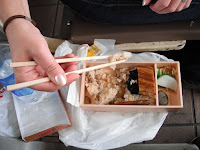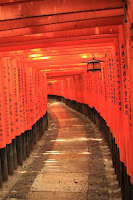We are well into our 5th month of travelling now and have bombarded you poor souls with many blog posts. Remember our original travel plan (The plan)? Maybe some of you have lost the overview of exactly what we are doing here, and to be honest, even Judith & I sometimes only have a vague memory of some of the details - looking back, bus terminals in Panama and Costa Rica do seem dangerously similar.
To make up for this, we have spent weeks in the Mongolian steppe working out the summary statistics of our travels so far - with some surprising results (can you feel the tension rising?). This is bottom-up data, so it's pretty accurate. Yepp, we admit to keeping a nerdy Excel-spreadsheet where we track everything.
Over the past 5 months:
- we travelled through 9 countries
- we covered more than 55,000 kms using different means of transport (now this huge number, for example, even surprised us. See below for details)
- we set foot on 3 continents (let's take the US definition of "two Americas", it sounds more impressive)
- we slept in 49 different locations, including 5-star hotels, friends' homes, boats, buses, trains, gers, hammocks, and a mini tent
- we departed from, transited, or arrived at 16 different airports
- we met up with 20 (!!) amazing people we know in 6 of the 9 countries - a million thanks again to everybody we met. Not to mention all the other characters we got a chance to meet for the first time
- we managed to grow our hair by some impressive 10 cms - Argentinian footballer look, here I come!
- we maintained a solid health almost all the time despite eating and drinking very strange stuff in dubious hygenical environments. Only yesterday, we drank fermented mare's milk, the king of drinks in Mongolia
- Judith took pictures of more than 200 different flowers
- I did >10,000 push ups and >15,000 sit ups (with all that money spent on travelling, there wasn't enough dough left for liposuction)
- we were laughed at by -among others- Argentinians, Brazilians, and Japanese when trying to show off our dancing skills
- we got scarily close to 6 snakes in different locations
- we worked through 7 travel guide books and read 12 other books
- we got up 9 times in the middle of the night trying to watch world cup games in Japan, China, and Mongolia
- we rode on 5 different horses and 2 camels each
- I got pick-pocketed once and Judith's one pair of pants got stolen once while drying outside (stealing the second pair off her legs would have been quite challenging I suppose)
- Judith & I never really got into a serious fight despite spending almost 24/7 together
- we woke up many times thinking that doing this trip was the greatest decision ever
As promised, here's an overview of the means of transport used during our travels. Again, there is a huge variety in the quality and comfort we experienced: surprisingly, business class flights and oxcarts can be quite different. Probably the worst we have been through were very overcrowded Mongolian mini-buses (20 people in a car designed for 12 are pretty standard, not to mention the incredible number of sacks of rice, potatoes, and stacks of eggs). Please note that we have excluded walking/hiking and local transport like subways or taxis, since it'd just be too much.
So much for the facts & figures. Currently, we are sitting in our Ger (Mongolian house tent) in Ulaanbaatar, having returned from our amazing 3.5 weeks on the Mongolian countryside. We will share these experiences in our next, picture-heavy post, probably posting from Hong Kong. Mongolia was beautiful, so please feel free to check our blog again over the coming weeks. Cheerio.

























